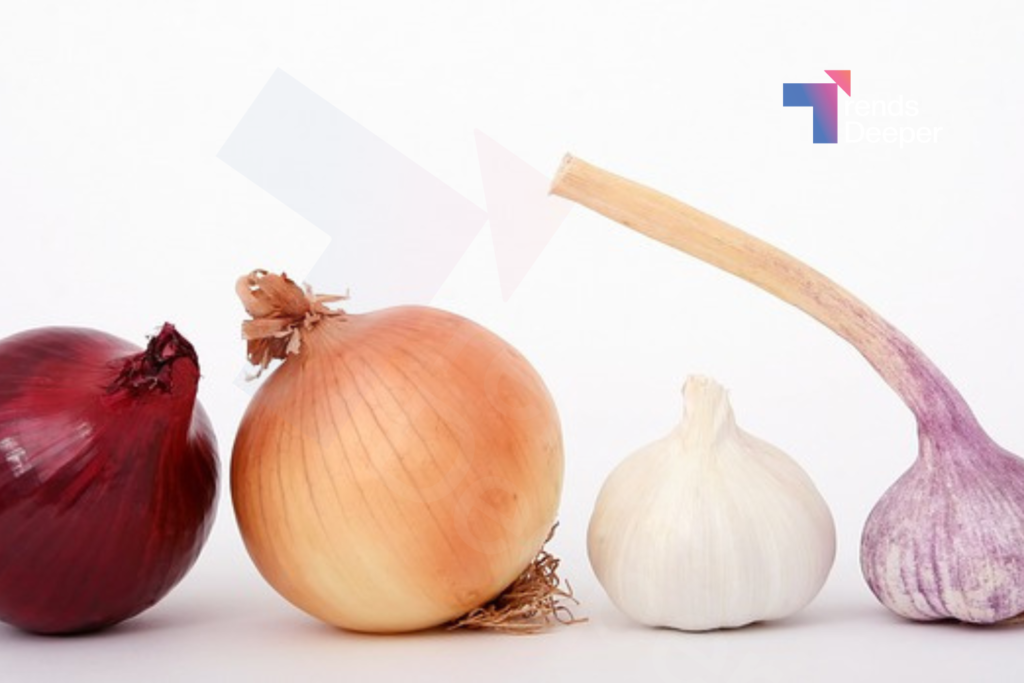Onions are a staple ingredient in kitchens around the world, known for their versatility and unique flavor profiles. Whether used raw in salads or cooked into stews, onions add depth to countless dishes.
What many may not know is that several types of onions exist, each with distinct characteristics, and some even grow wild in places like Alaska.
This article dives into the world of onions, exploring the different varieties, and highlights the edible wild onions found in the Alaskan wilderness.
The most common types of onions include yellow onions, red onions, and white onions. Yellow onions are the most popular, prized for their balance of sweetness and pungency, which makes them ideal for cooking.

Red onions, known for their sharp flavor and vibrant color, are often eaten raw, making them perfect for salads and sandwiches. White onions, on the other hand, offer a more delicate taste and are frequently used in Mexican cuisine.
Beyond these common types, there are also shallots, green onions, and leeks. Shallots, smaller and milder than regular onions, are frequently used in gourmet cooking, while green onions (or scallions) are young onions harvested before the bulb forms, providing a milder taste. Leeks, which have a subtle onion flavor, are often used in soups and stocks.

While cultivated onions dominate grocery store shelves, wild onions grow naturally in different parts of the world, including Alaska.
Allium schoenoprasum, commonly known as wild chives, is one of the most notable wild onions in Alaska. These edible plants can be found in coastal areas and tundra regions, thriving in moist soil.
Wild chives resemble their cultivated counterparts and are easily identified by their long, slender stalks and distinctive onion smell.
In addition to wild chives, Alaska is also home to Allium bisceptrum, or twonerve onion, which grows in the southern regions of the state.

These onions are similar in flavor to the cultivated varieties, providing a mild yet distinctive taste. They are often used by local foragers to enhance home-cooked meals, adding a fresh and natural touch to various dishes.
Foraging wild onions has been a tradition in Alaska for centuries, especially among Indigenous communities who have long relied on local plants for both food and medicine.
Today, these wild onions continue to attract foragers and chefs who appreciate the natural, unprocessed flavors they bring to the table.
However, it’s essential for foragers to be cautious. Some plants resemble wild onions but are toxic, so proper identification is crucial.
Wild onions have a distinct onion smell when crushed, which helps differentiate them from potentially harmful lookalikes. Responsible foraging also means taking only what’s needed and ensuring that enough plants remain for future growth.
In addition to their culinary uses, wild onions offer a range of health benefits. They are rich in vitamins and antioxidants, known for supporting immune health and reducing inflammation.
Foragers not only enjoy the flavors but also the added nutritional benefits that come with using wild ingredients.
Wild onions in Alaska offer a taste of nature that many people never get to experience. Whether incorporated into gourmet dishes or used in simple home cooking, they provide an authentic, natural flavor that connects people with the environment.
For those adventurous enough to explore Alaska’s wild spaces, discovering these edible gems can be a rewarding experience.
This article gathered data from various sources on wild onions, their types, and the growing popularity of foraging in Alaska. Reliable information was cross-referenced from botanical and culinary sites, as well as foraging guides specific to the region.


